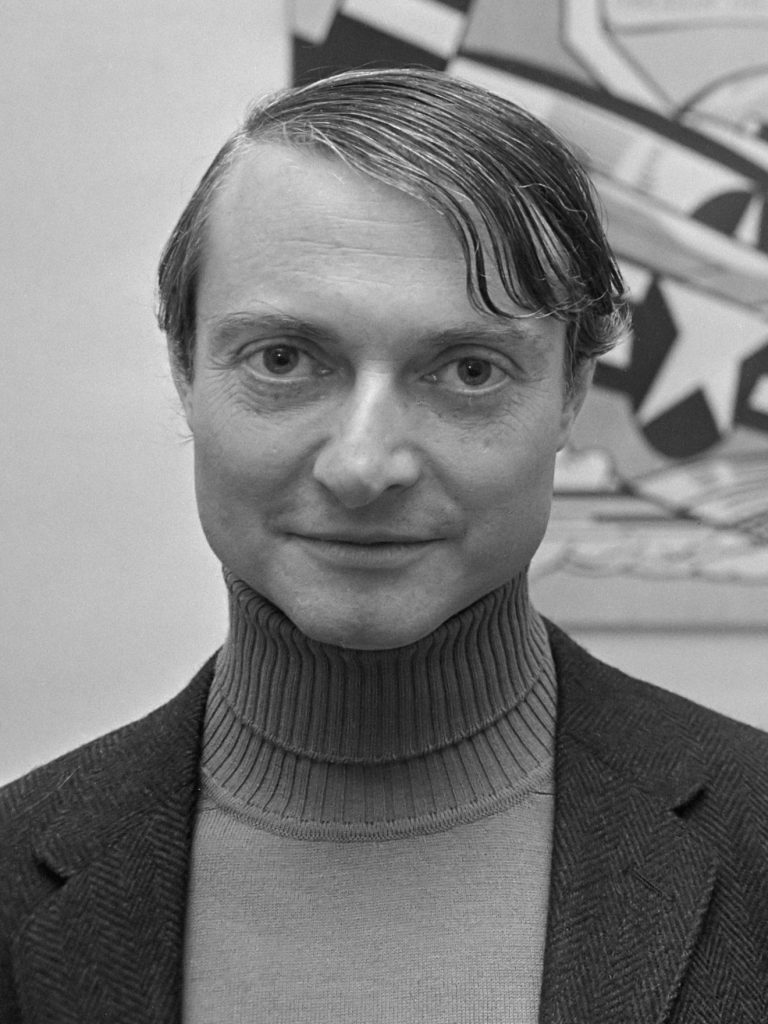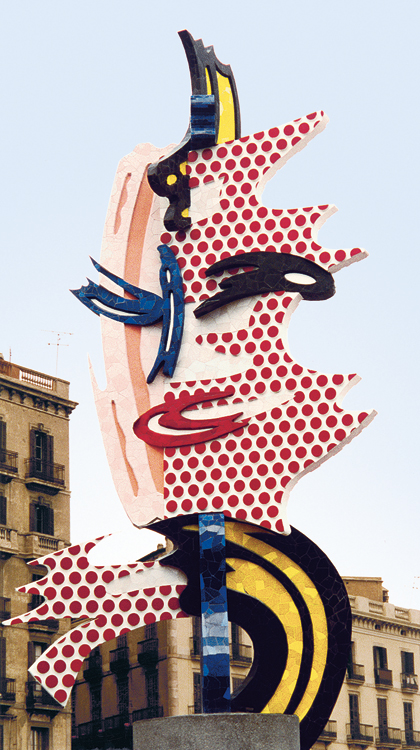American artist Rou Lichenstein was one of the founders of American Pop Art. His most famous works, which were cartoon-style paintings, are synonymous with the movement.
Lichenstein worked in several modern art styles early on in his career, including Abstract Expressionism. He began to include cartoon characters such as Mickey Mouse into his abstract paintings.
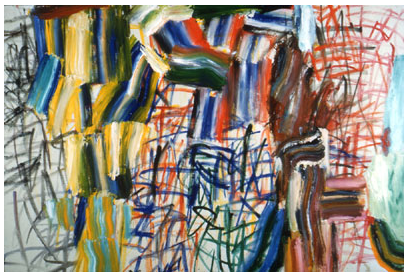
During the ’60s, he began to move away from his abstract style and started to experiment with other techniques. He challenged the idea that commercial art and cartoons were not “true” art, going against the Abstract Expressionist movement which was popular during this time.
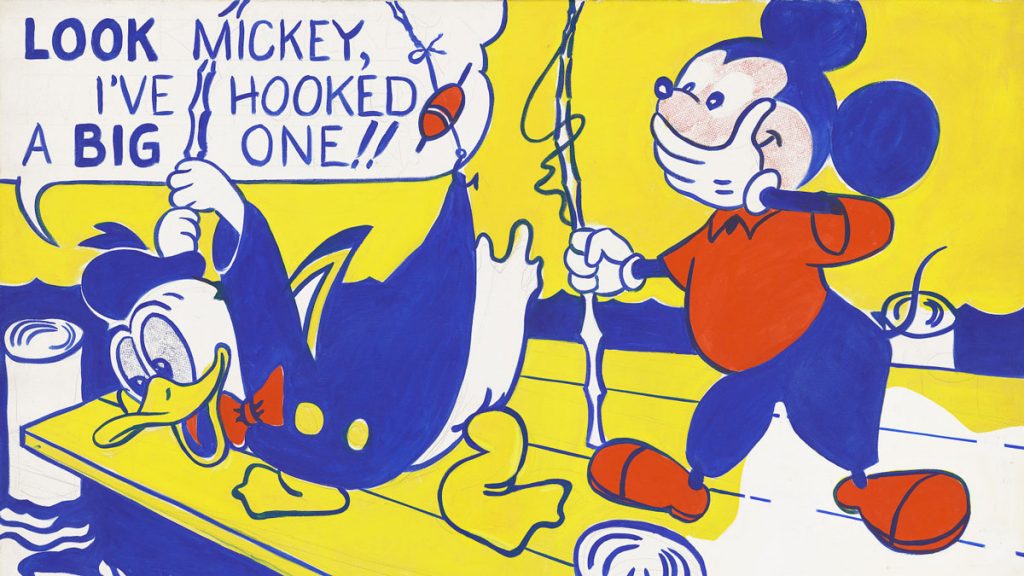
–
This piece came from a challenge from one of his sons, who pointed to a Mickey Mouse comic book and said; “I bet you can’t paint as good as that, eh, Dad?”
The process for his cartoon works began with Lichenstein taking a single frame from a comic strip, then reproducing the frame on canvas and paint, working with bold black lines and Ben-Day dots.
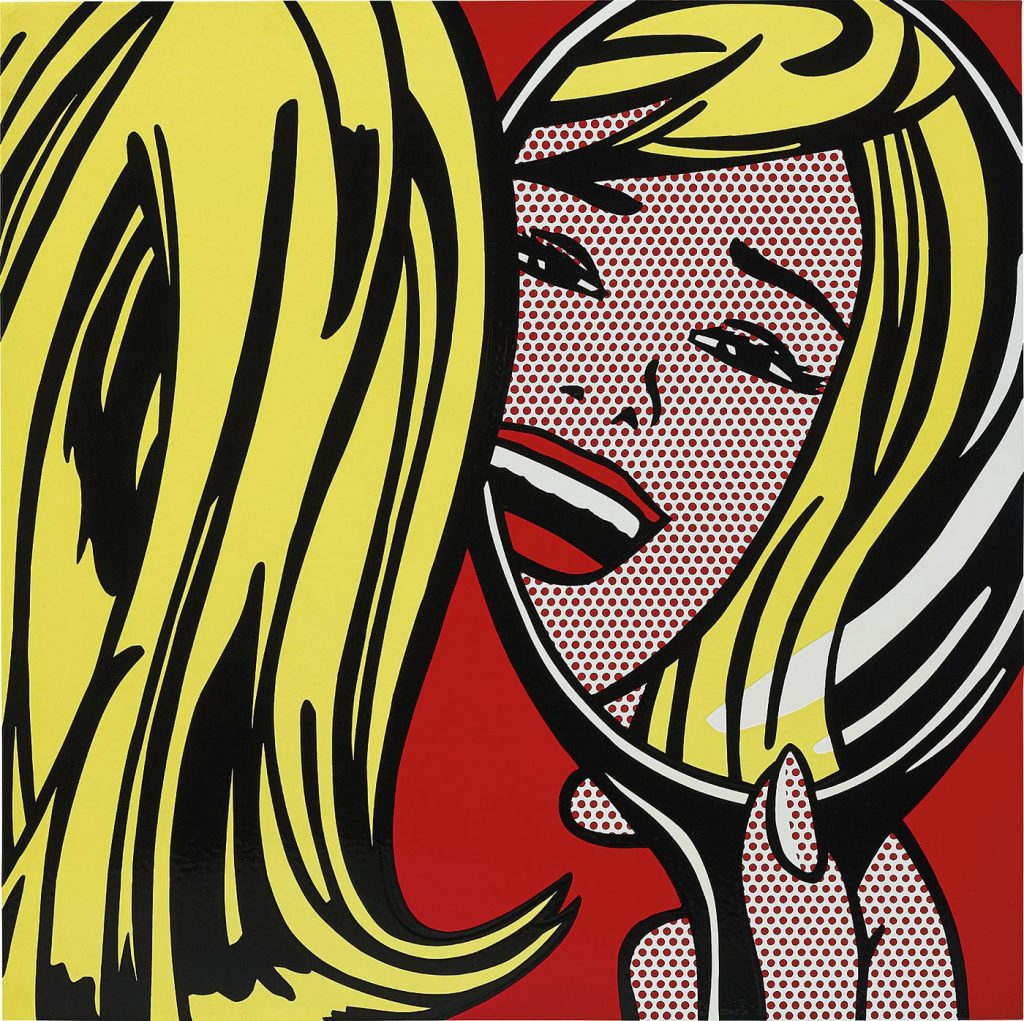
–
Ben-Day dots, named after illustrator and printer Benjamin Henry Day Jr., was a cheap printing technique that involved utilizing dots to create the effect of shading and colours in print images.
Although his paintings are famously known, he has also created thousands of murals, prints, ceramics and sculptures as well.
Personally, I find Lichenstein’s works enjoyable to look at. His bold use of colours and line are incredibly impactful. However, I am not sure how to feel knowing that his paintings literally came from the work of other people without credit. Lichenstein stated that his work is different because of the way he created it, as he chose the colours and painted the dots on by himself, but it does not dismiss the fact that the line drawings are not original.

Original comic book panel from DC Comics’ All-American Men of War No. 89 (Feb. 1962) 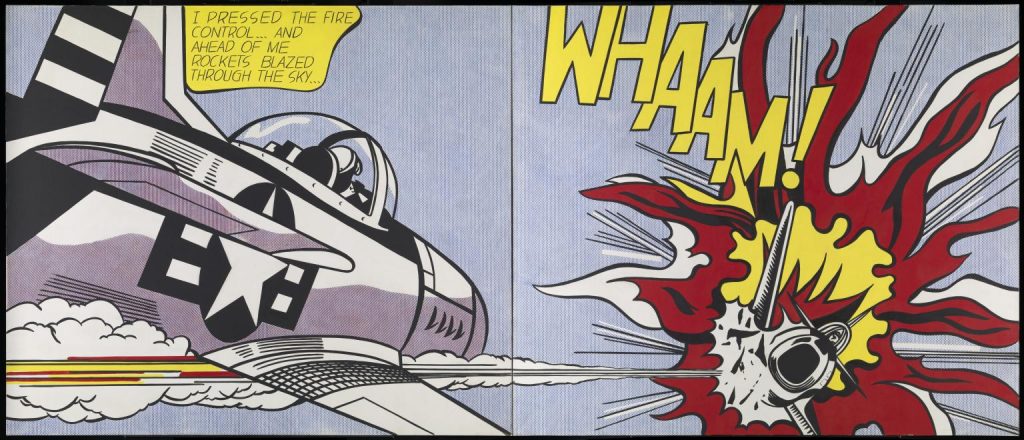
Whaam! (1963)
I also really like his sculptures, especially those of his brushstroke series. They give the effect of something that is flat and 2-D while in reality, they are not. They remind me of these backpacks that were really popular a few years ago because they gave the viewer the illusion that they were completely flat and not a functional backpack while in reality they were. I will never get tired of that concept- it’s so clever.
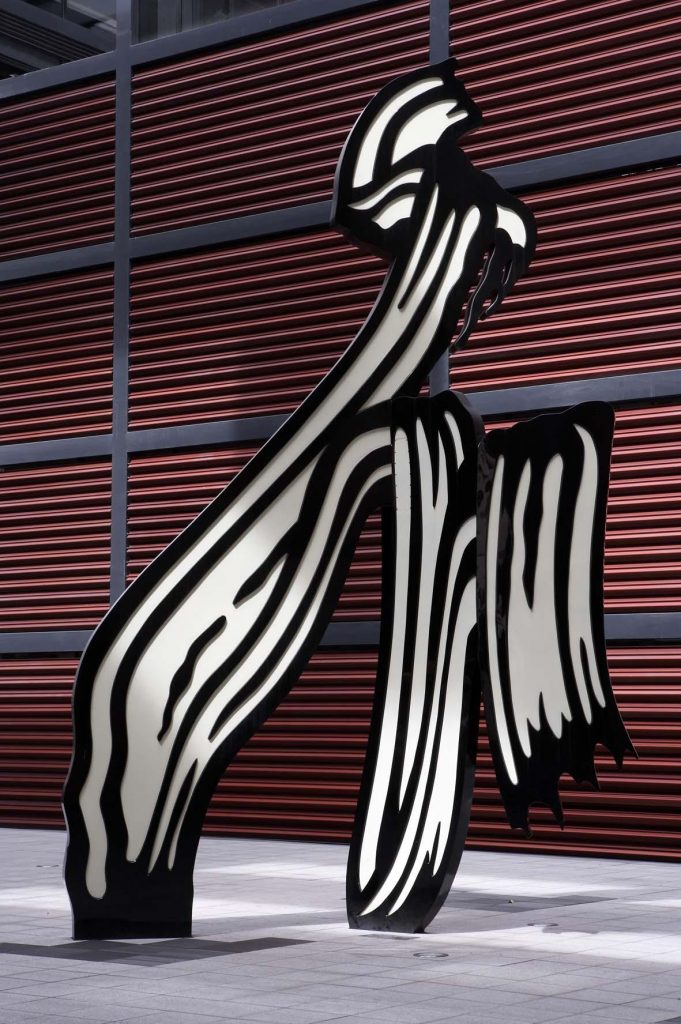

Backpacks that were made to look like they were 2-D and reminded me of Lichenstein’s sculptural works. ^^ 
Sources:
www.wikiart.org/en/roy-lichtenstein
www.theartstory.org/artist/lichtenstein-roy/life-and-legacy/
hwww.mymodernmet.com/roy-lichtenstein/

